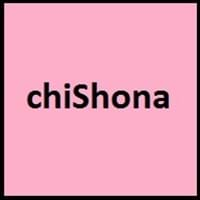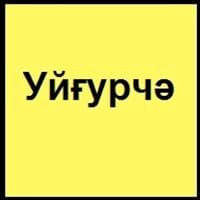National Language
Botswana, Mozambique, Zimbabwe
China
Second Language
Not spoken in any of the countries
Not spoken in any of the countries
Speaking Continents
Africa
Asia
Minority Language
Not spoken in any of the countries
Kazakhstan, Uzbekistan
Regulated By
Not Available
Working Committee of Ethnic Language and Writing of Xinjiang Uyghur Autonomous Region
Interesting Facts
- Shona language is tonal language.
- The African people in Zimbabwe is made of 10 ethnic groups, each speaking a different languages, shona is spoken by 60 percent of population.
- Uyghur language has large quantity of loan words from Persian, Russian and Chinese.
- Uyghur was originally written with the Orkhon Alphabets.
Similar To
Kalanga and Nambya Language
Uzbek Language
Derived From
Not Available
Gokturk Language
Alphabets in
Shona-Alphabets.jpg#200
Uyghur-Alphabets.jpg#200
Scripts
Latin
Arabic, Cyrillic, Latin
Writing Direction
Not Available
Left-To-Right, Vertical, Top-To-Bottom
Time Taken to Learn
Not Available
Hello
Mhoro
Ässalamu läykum.
Thank You
Waita zvako
rakhmat
How Are You?
Wakadini zvako?
Yakshimasiz? / Qandaq ahwalingiz?
Good Night
Urare zvakanaka
Kachlikingz khayrilik bolsun
Good Evening
Manheru
Kachlikingz khayrilik bolsun!
Good Afternoon
Masikati
Not Available
Good Morning
Mangwanani
Atiganlikingz khayrilik bolsun!
Please
Ndinokumbirawo
birdam
Sorry
Ndineurombo
kachurung
I Love You
Ndinokuda
sizni yahshi kOrman
Excuse Me
Pamusoro
Kachurung
Where They Speak
Zimbabwe
China
Where They Speak
southern Zimbabwe
China
Where They Speak
central Zimbabwe, Mashonaland
China
Native Name
Not Available
Уйғур /ئۇيغۇر (ujġgur / uyghur)
Alternative Names
Chishona, “Swina” (pej.), Zezuru
Uighuir, Uighur, Uiguir, Uigur, Uygur, Weiwu’er, Wiga
French Name
shona
ouïgour
German Name
Schona-Sprache
Uigurisch
Pronunciation
Not Available
[ʊjʁʊrˈtʃɛ], [ʊjˈʁʊr tili]
Ethnicity
Not Available
Uyghur
Language Family
Niger-Congo Family
Turkic Family
Subgroup
Benue-Congo
Not Available
Branch
Bantu
Not Available
Early Forms
Not Available
Karakhanid, Chagatai, Eastern Turki
Standard Forms
Not Available
Uyghur
Signed Forms
Not Available
Not Available
Scope
Individual
Not Available
ISO 639 6
Not Available
Not Available
Glottocode
core1255
uigh1240
Linguasphere
99-AUT-a
No data Available
Language Type
Living
Not Available
Language Linguistic Typology
Not Available
Not Available
Language Morphological Typology
Not Available
Not Available
All Shona and Uyghur Dialects
Most languages have dialects where each dialect differ from other dialect with respect to grammar and vocabulary. Here you will get to know all Shona and Uyghur dialects. Various dialects of Shona and Uyghur language differ in their pronunciations and words. Dialects of Shona are spoken in different Shona Speaking Countries whereas Uyghur Dialects are spoken in different Uyghur speaking countries. Also the number of people speaking Shona vs Uyghur Dialects varies from few thousands to many millions. Some of the Shona dialects include: Hwesa, Karanga. Uyghur dialects include: Turpan , Hotan. Also learn about dialects in South American Languages and North American Languages.
Shona and Uyghur Speaking population
Shona and Uyghur speaking population is one of the factors based on which Shona and Uyghur languages can be compared. The total count of Shona and Uyghur Speaking population in percentage is also given. The percentage of people speaking Shona language is 0.13 % whereas the percentage of people speaking Uyghur language is 0.12 %. When we compare the speaking population of any two languages we get to know which of two languages is more popular. Find more details about how many people speak Shona and Uyghur on Shona vs Uyghur where you will get native speakers, speaking population in percentage and native names.
Shona and Uyghur Language Codes
Shona and Uyghur language codes are used in those applications where using language names are tedious. Shona and Uyghur Language Codes include all the international language codes, glottocodes and linguasphere.





